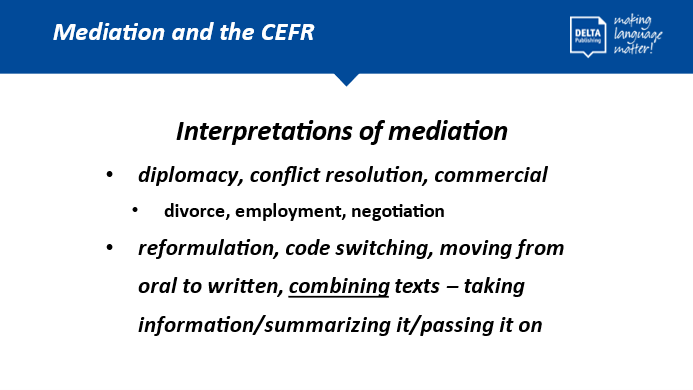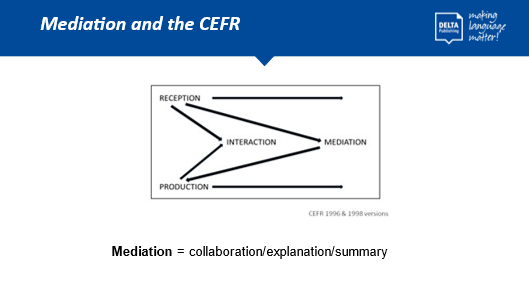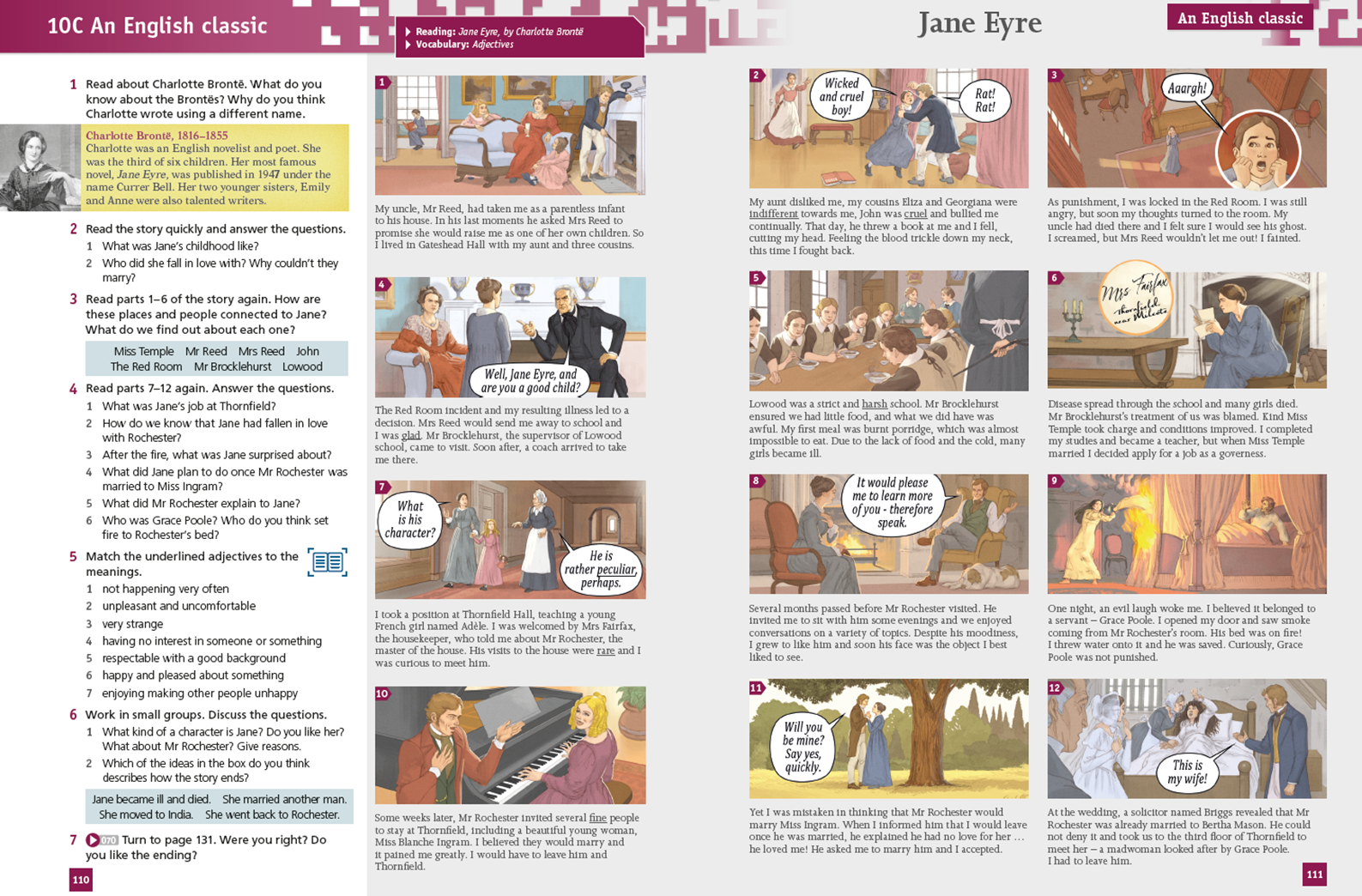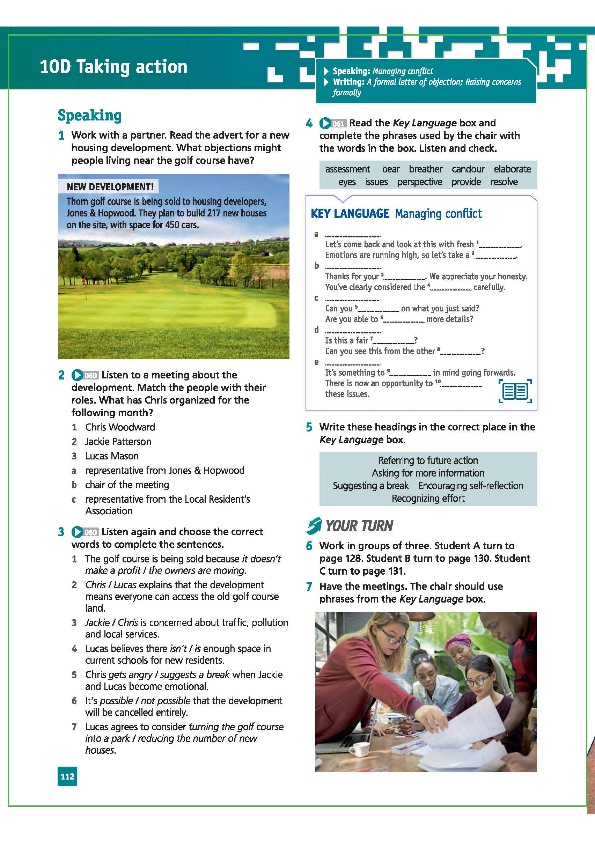Mediation in the ELT Classroom
Cathy Rogers works in ELT materials writing and development, alongside teaching. She has edited several general English and business English coursebooks and has co-written the 6-level general English course On Point with her husband, Louis Rogers.
What does ‘mediation’ mean?
When I first heard that ‘mediation’ was the new buzzword in ELT, I was rather alarmed. The context I had heard this word used in the most was in relation to divorce. I’d heard that when a marriage breaks down and the couple are unable to communicate well, they seek ‘mediation’ to resolve issues and come to an agreement. Similarly, I had heard the word in relation to work-place disputes, where an independent third party is brought in to mediate during tense discussions. I was confused as to how this term applied to the ELT classroom, as it’s not generally a place of conflict. Then I looked at other interpretations of the word, and it all started to make more sense. The second interpretation in the following slide clearly has relevance for language learning. Code switching, for example, could relate to translation between L2 and L1, and combining texts could relate to EAP tasks, where students have to read several texts, extract relevant information and then write an essay.

Mediation and the CEFR
Mediation first appeared in the CEFR back in 1996 and again in 1998. At this point it was included alongside reception, production, and interaction. The four skills that we traditionally think of in regard to language learning are covered by reception (listening and reading) and production (speaking and writing). Interaction is a combination of reception and production, e.g. listening and speaking within a conversation, or reading a message and writing a response. Mediation is also envisaged as a combination of reception and production, but its definition is rather more complex than standard interaction. It’s defined as collaboration, explanation or summary.

In the 2001 versions of the CEFR, mediation is described in more detail, but it is primarily seen as occurring during translation from one language to another. There is also some mention of mediation in relation to reading or listening to a text and then reprocessing the information. It’s only in 2018 that mediation gains its own section within the CEFR. At this point it’s recognised that mediation is an incredibly important aspect of successful communication, and for this reason it should be developed as a skill during language learning.
Types of mediation
In the 2018 CEFR handbook, the section on mediation describes the different forms it can take, including linguistic mediation (e.g. translation), textual mediation, and pedagogic mediation (the mediation activities that teachers naturally perform). It’s interesting to note how much mediation actually occurs during regular teaching. When a teacher summarizes a complicated text, breaks down a grammar point, or facilitates group work they are mediating. Therefore teachers are actually experts in mediation – they have been mediating since the start of their careers. However, it’s important for teachers to focus on how they can encourage students to improve their mediation skills.
Mediation activities
The CEFR lists three kinds of mediation activities that we can encourage our students to participate in. The first is ‘mediating a text’, which requires students to read or listen to a text and then relay what they have understood in that text. Many typical classroom activities practise this skill, including jigsaw reading tasks, information gap speaking activities, summarising information, writing reports, presentations or book reviews. On Point incorporates these activities throughout and includes analysis and personal response to creative texts in the four higher levels. In these levels we have adaptions of classic literature, which the students have to read and react to. Here’s an example from Upper Intermediate – a short version of Jane Eyre.

The second type of mediation activity listed in the CEFR is ‘mediating concepts’. This is explained as being about communicating in a group, either as a group leader or group member. Again, this type of mediation is often practised during language lessons, as it encompasses group discussions, presentations, and problem-solving tasks. Whilst the CEFR’s understanding of ‘interaction’ is linked to the outcome of these tasks, i.e. the quality of a presentation and the language used, the mediation aspect focuses on the process, i.e. how well students communicated with each other during the preparation phase. It’s worth noting that this is also recognised as an important skill for students in the Cambridge Exams handbooks. In speaking exam tasks, students are marked on how well they listen to and interact with their speaking partner, in addition to their use of language.
The final type of mediation activity is ‘mediating communication’, which is defined as ‘acting as an intermediary’. Here there is actually a connection with my original understanding of ‘mediation’, since it’s connected with diplomacy and facilitating communication in delicate situations. This kind of situation is less likely to occur in the ELT classroom, but where it does, students need to recognise conflict and suggest solutions using diplomatic and persuasive language if possible. Clearly, only higher level students will be able to do this with ease. In On Point we have included speaking lessons that practise how to deal with conflict at higher levels. Here’s an example from C1 where students listen to a meeting where there is a dispute between housing developers and local residents about a plan for new houses. A chairperson has to mediate between the two sides using diplomatic language. Students then roleplay a similar conversation.

Conclusion
It’s important to recognise that mediation is not a new concept for teachers. We’ve been mediating and using mediation activities ever since we stepped into the classroom. What has changed is its level of importance – it’s now been fully recognised as key to truly successful communication. Since our goal as teachers is to enable our students to communicate successfully in English, we need to be aware of how we can incorporate more mediation into our lessons. Consciously choosing activities that practise mediation skills is a good starting point, and as our confidence in this area grows we will begin to spot many opportunities for mediation during our lessons. The result will be that our students will not only be improving their language knowledge, they will also be engaging with texts on a deeper level and enhancing their ability to communicate well with others.
References
Council of Europe (CEFR) (2001). Common European Framework of Reference for Languages: Learning, Teaching, Assessment. New York: Cambridge University Press.
Council of Europe (2018). Common European Framework of Reference for Languages: Learning, Teaching, Assessment. Companion Volume with New Descriptors. Strasbourg: Council of Europe Publishing. Authors: B. North, E. Piccardo, T. Goodier.
Rogers, C and Rogers, L. (2021). On Point Upper Intermediate. Stuttgart. Delta Publishing.
Rogers, C and Rogers, L. (2021). On Point Advanced. Stuttgart. Delta Publishing.
Please check the Pilgrims f2f courses at Pilgrims website.
Please check the Pilgrims online courses at Pilgrims website.
Mediation in the ELT Classroom
Cathy Rogers, UK